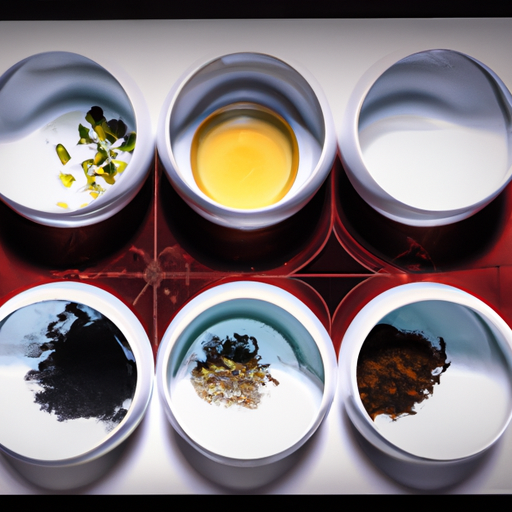The Intrigue of Tea Tastings: A Sensory Journey
Tea tastings hold a certain mystique, akin to swirling your fine glass of wine and whispering about the notes of woody earthiness or hints of citrus. But unlike the often ostentatious world of wine, tea tastings represent a more humble and communal experience steeped in history and culture. It's high thyme to shed some light on the sublime adventure of tea tasting and the unraveling of its sensory delights.
The Beginning: Why Tasting?
So, why partake in tea tasting? Like wine, cheese, or artisan chocolate, tea boasts a myriad of flavors and aromas, reflecting its terroir, method of processing, and age. Tea tasting offers a chance to expand your palate and broaden your taste buds' horizons, embracing the nuances of the world's second most consumed beverage (next to water). Furthermore, exploring tea tastings can deepen your appreciation for the culture, history, and craft that goes into producing each distinct tea variety.
Tea Tasting Basics: The Five S's
Table 1. The Five S's of Tea Tasting
| Step | Purpose |
|---|---|
| See | Observe the dry tea leaves, noting color & appearance |
| Smell | Inhale the aroma of the dry & wet tea leaves |
| Steep | Brew the tea using proper temperature & time |
| Sip | Taste and evaluate the tea's flavor profile |
| Savor | Enjoy the lingering aftertaste & mouthfeel |
See
The visual assessment of tea starts by noting the appearance and color of the dry tea leaves. High-quality teas tend to have a uniform, well-intact leaf, while lower-quality teas often contain broken leaves or even tiny twigs. Observing the appearance and color of dry tea leaves can provide insights into its processing techniques, like oxidation level and rolling method.
Smell
Inhale the fragrance of dry tea leaves first, then do the same with wet leaves after steeping (do so with caution, as the wet leaves will be hot). This step helps you to detect and appreciate the tea's aroma, which can present an array of scents, from floral to fruity or even nutty.
Steep
Use the appropriate water temperature and steeping time for each specific tea type to maximize flavor and aroma. The wrong temperature or time can ruin an otherwise great tea.
Table 2. Steeping Guidelines for Different Tea Types
| Tea Type | Water Temperature | Steeping Time |
|---|---|---|
| White | 160-175°F (70-80°C) | 1-3 minutes |
| Green | 175-185°F (80-85°C) | 1-3 minutes |
| Oolong | 185-195°F (85-90°C) | 3-5 minutes |
| Black | 200-212°F (95-100°C) | 3-5 minutes |
| Pu'erh | 212°F (100°C) | 2-8 minutes, |
| depending on type | ||
| Herbal | 212°F (100°C) | 5-7 minutes |
Sip
Sip, don't gulp! Sipping tea allows you to savor the flavor profile of the tea, from its natural sweetness to a pleasant bitterness, or even the mouth-drying sensations of some tea varieties (called astringency). Slurping the tea (yes, really!) and swishing it around your mouth can help you better appreciate the flavors and texture.
Savor
Linger on the aftertaste and mouthfeel of the tea after swallowing. Some teas leave a lasting lingering flavor, while others have a clean, crisp finish. Consider the memorable aspects of each tea and build your mental catalog of experiences and preferences.
Tea Tasting Best Practices
-
Use a consistent steeping method: Whether you use a standard teapot, a gaiwan, or a simple mug, maintain the same brewing method for your tastings.
-
Take notes: Document your observations to better understand your preferences and to track how your perceptions evolve over time.
-
Taste multiple teas side by side: Comparing and contrasting teas side by side can highlight their differences and make it easier to discern unique characteristics.
-
Taste pure teas before flavored ones: It's important to get a grasp of pure tea flavors before venturing into blends, as those mixed with additional flavors (e.g., fruity, herbal, or spiced) can easily overpower the delicate nuances of the tea itself.
-
Cleanse your palate: Between tasting different teas, cleanse your palate using unsalted crackers or plain bread and room-temperature water.
-
Practice makes perfect: Developing a refined tea palate takes time and practice – so enjoy the journey, and taste often!
In Conclusion: Brewing Adventure
The art of tea tasting opens a world of sensory delights, inviting enthusiasts to explore countless flavors, textures, and aromas. Whether you're delving into a tea tasting journey out of personal fascination or perhaps even planning a tea-tasting party among fellow tea aficionados, there are countless fragrant and delicious pleasures to be unlocked. Laugh in the face of conformity and pu'erh your way into the intriguing world of tea tasting; it's quite a steep learning curve, but worth every sip.
